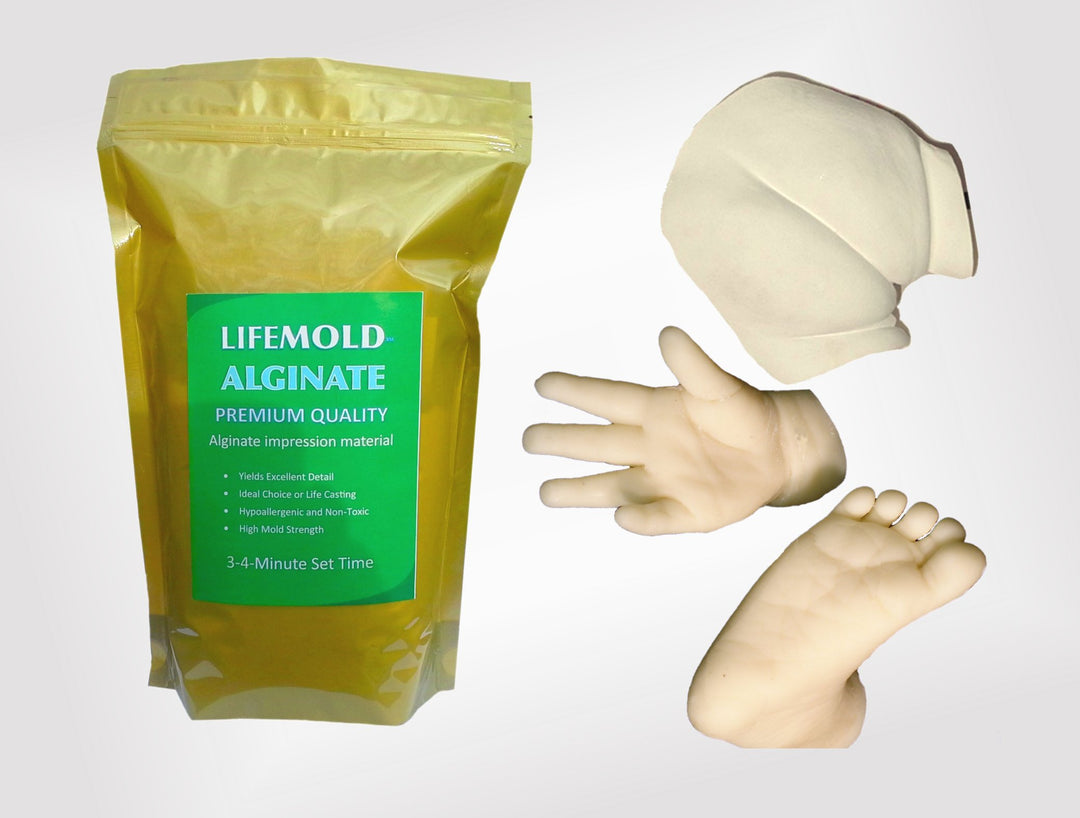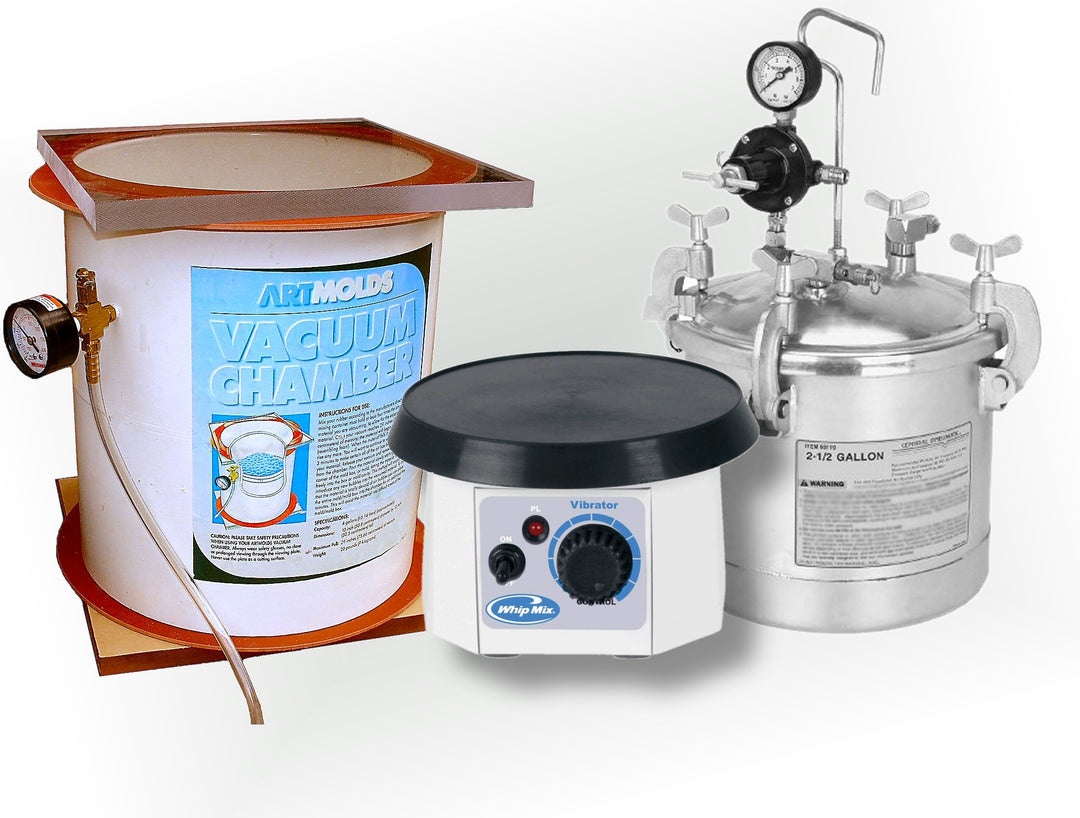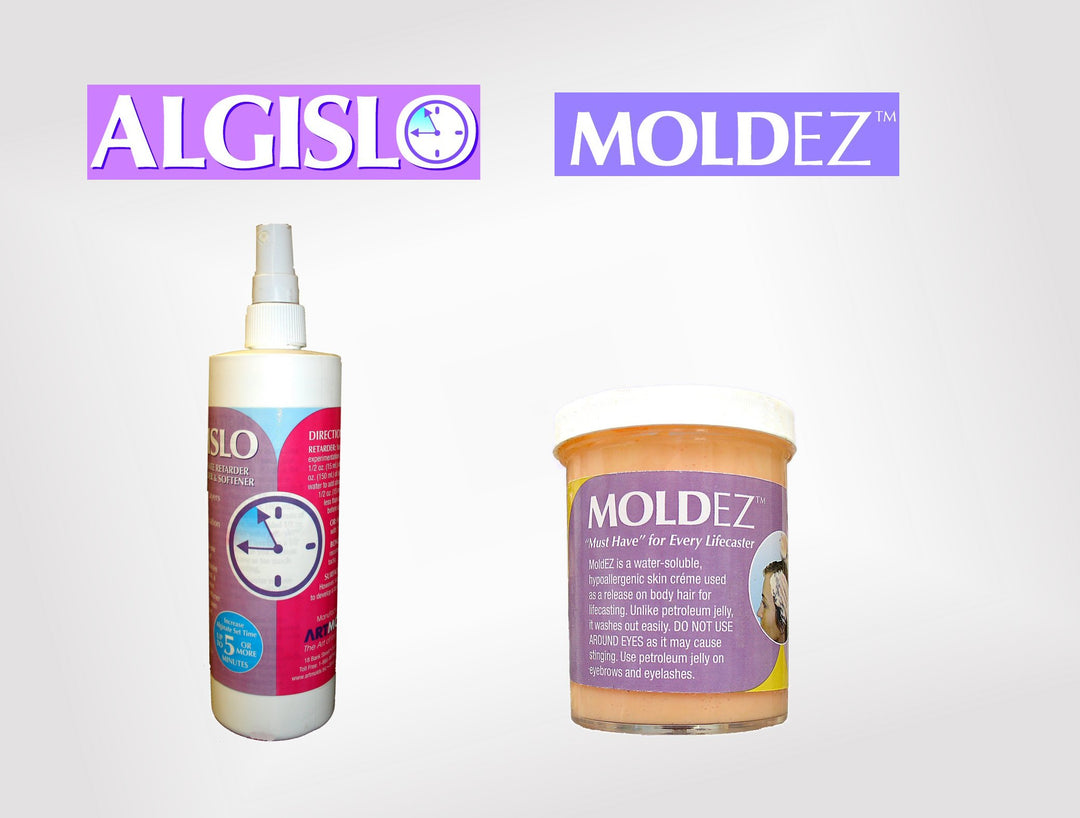SUBSCRIBE TO OUR BLOG
Subscribe to get special offers, free giveaways, and once-in-a-lifetime deals.For many, mold making can seem a bit intimidating. This ‘how-to’ article will demonstrate just how easy it is to create molds that reproduce anything . . . and how mold making can be fun, too!
Generally speaking, there are three basic types of molds. Using a blanket mold, you simply pour your mold making material over your model. The other two types are: a block mold and a compound mold.
A compound mold is the most complicated as it is created in several parts. However, a block mold can substantially simplify many project types which may require a compound mold. A block mold is a one-part poured mold. It can be used to reproduce figurines, small statues, and uncomplicated models of all sizes.
In our example, we have chosen to reproduce a baby’s hand that we created earlier using an alginate mold and a plaster casting material called CastRite, an art casting stone. With the block mold making method, you can make numerous copies of your model using many types of casting materials. Since we have chosen silicone as the mold making method, we will not need a mold release as silicone adheres only to silicone.
For this project, you’ll need only about thirty minutes of preparation time. Then, you wait several hours for the mold rubber to cure before you can demold your project. We will use a two-part RTV silicone rubber. But, the method is the same no matter what mold rubber you may choose to use. However, for some materials, you may need a mold release. So, make certain you read the directions for its use. The materials and tools required are minimal. Let’s get started. Click on the video above.







Leave a comment